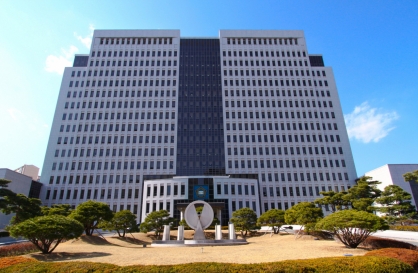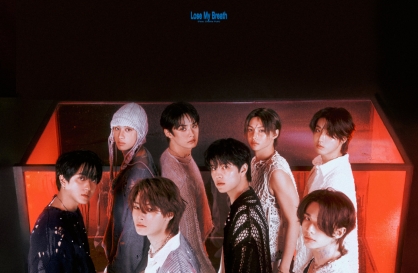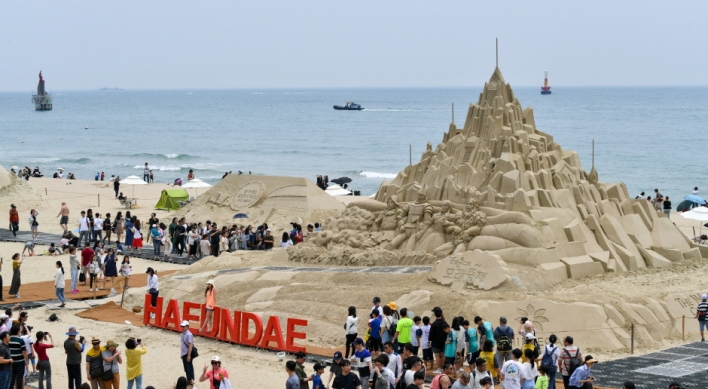<**2>
This is the 30th in a series of articles highlighting tourism spots in Seoul. The guide for planning weekend trips in the capital city will help readers rediscover Seoul. - Ed.
By Annabelle Lee
All great civilizations evolved around water, and most of the world`s great cities developed alongside rivers. Korea`s capital Seoul is no exception. With a total length of 514 km, the River Han begins at the merger of the Namhan River and the Bukhan River in Gyeonggi Province, cuts across Seoul and flows to the West Sea.
There are 25 bridges across the river and alluvial islands formed by the sand and sediment carried by the river. One of the most famous islands in the Han River is Yeouido, Seoul`s main business and investment banking district. Another island that has become a major tourist attraction in Seoul is Seonyudo, which literally means the angels` resort island.
Where angels go to relax
Seonyudo was beautiful enough to attract angels - at least until the 17th century. A man named Jeong Seon (1676-1759) in the Joseon period painted a landscape of the area that drew much attention.
At that time, Seonyudo was a peak named Seonyubong that rose above the edge of the Han River. With a height of 40 meters above sea level, Seonyubong embraced two small mountain peaks and a white sandy beach at its foot. It is said that boatmen often tied up their boats by the river and indulged themselves in the breathtaking view.
language="JavaScript" src="/khjs/banner/article_340.js">
However, Seonyubong went through a series of transformations in the name of "development." In 1925, Japan built a bank to prevent flooding and broke the rocks of Seonyubong with excavators to use them for the construction of an airport on Yeouido. As a result, Seonyubong became a low hill cut off from the land.
Since 1978, Seonyudo served as a water purification plant for the southwestern region of Seoul and was closed to the public until 2002, when it reopened as an ecological park to coincide with the 2002 FIFA World Cup.
A water plant turned into an ecological park
Seonyudo is not just an ordinary ecological park, but Korea`s first recycled ecological park. After entering Seonyudo from the west, you`ll be greeted by four round enclosures. These are the recreation areas that utilize worn-out water purification facilities. The 200-seat round theater, an environment learning center, and the round restroom are unique in appearance.
The pipelines and the water conduits are transformed into playground equipment for children and small wetland areas. The walls and the pillars are made into artistic structures. A variety of wild flowers, water plant and other plants native to Korea make the place even more nature-friendly.
The gateway to Seonyudo is the exotic arch-like Seonyu Bridge. This pedestrian bridge looks curved when viewed from any angle and creates a mysterious atmosphere at night with the light reflected by the water surface. It is often referred to as the "Mirabeau Bridge in Seoul" as it was designed by a French architect.
<**3>
<**4>
Old concrete and green shoots in perfect harmony
The most beautiful space in Seonyudo is perhaps the Garden of Transition. It consists of two gigantic water reservoirs with a wooden-floored overpass along with a water conduit and a variety of tall trees planted below floor level. The whole space is filled with various trees such as Japanese maples, day lilies, ash trees, corydalis speciosa and Chinese Astilbes and creates subtle harmony between the worn-out facilities and the green plants.
Pass the aquatic plant garden filled with lotus, common water hyacinth, and duckweeds and you will be greeted by the "Garden of Green Columns."
With the roof of the water purification plant removed, some 30 concrete columns stand covered in ivy. Although Seonyudo no longer retains the beauty captured by Jeong Seon in his painting some 300 years ago, its 21st-century version teaches us what the word "rebirth" truly means.
Cafeteria Naru
Naru is the pump station turned into a cafe in Seonyudo Park. It serves hamburgers and pork cutlets on the first floor and various drinks including coffee on the second floor. Here you can enjoy the open view of Seonyudo and the Han River. The sunset seen from the cafe is breathtaking. It opens from 9 a.m. to 11 p.m. For more information, call 02-2675-2112.
Picnic site: Yanghwa Park
You cannot take your car to Seonyudo, and the nearest parking lot is at Yanghwa Park, on the other side of the Seonyu Bridge. Yanghwa Park is equipped with a nature learning center, a volleyball court, a basketball court, a sunbathing area, and a cruise ship quay. Be sure to take your bikes, in-line skates, badminton rackets, Frisbees and other fun things to the park.
Night view of the bridges across the HanRiver
There are 25 bridges across the Han River, which create a fantastic view at night. Their complete transformation at night would make your visit to Seoul even more memorable.



![[K-pop’s dilemma] Can K-pop break free from ‘fandom’ model?](http://res.heraldm.com/phpwas/restmb_idxmake.php?idx=644&simg=/content/image/2024/05/09/20240509050541_0.jpg&u=20240509173751)




![[News Analysis] Yoon's first 2 years marked by intense confrontations, lack of leadership](http://res.heraldm.com/phpwas/restmb_idxmake.php?idx=644&simg=/content/image/2024/05/09/20240509050612_0.jpg&u=20240509233252)

![[Graphic News] Beer the most favored alcoholic drink by Koreans](http://res.heraldm.com/phpwas/restmb_idxmake.php?idx=644&simg=/content/image/2024/05/09/20240509050765_0.gif&u=)







